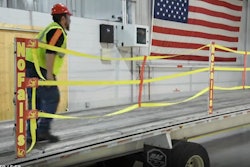
Technology adoption tends to follow a familiar S-shaped curve.
The bottom left is the starting point, where ideas become actual commercial products and customers start to buy them. Those first generation customers find enough value in the technology to generate further investment by others. In parallel, the manufacturer improves and matures the product based on the feedback from the customers and their own research and development efforts.
In the mid-part of the S, sales dramatically increase – more customers, more production, more funding, more profit, more improvement. Everything is going great.
The easy improvements have all been done by the top end of the S, and the potential population of new buyers has dwindled. It takes money and time to make any significant gains in performance and attracting new customers.
After more than 125 years of development, diesel engines in trucks often are cited as one of these mature technologies, with nearly 100% market share, where new significant improvements now require significant investments in time and money.
That simplistic view of technology diffusion works pretty well to explain winners, but not all horses seem to finish the race. For every great market and technology success, there are scores of, to put it politely, less successful ones. Ideas that seemed to have potential at a given moment in history, but for a variety of reasons just never measured up to expectations.
They make great fodder for historians and fuel for arguing over whether one new technology is better than another by comparison to some past failure.
The promise of the atom in the 1950s led to funded projects for nuclear-powered airplanes (Aircraft Nuclear Propulsion program), cargo ships (NS Savannah), and even a nuclear-powered car (Ford Nucleon). Some of these actually made it beyond paper studies and into prototypes and actual product.
“Atomic batteries to power, turbines to speed” might evoke an image of the 1960’s Batmobile, but turbines have long been a go-to technology for ground vehicle transportation inventors. In the 1940s, looking to compete with the rapid dominance of diesel-electric trains and unwilling to part with coal as an energy and income source, the Chesapeake and Ohio Railroad built the Class M-1 and Pennsylvania Railroad the Class S2-6200 in collaboration with Baldwin Locomotive Works and Westinghouse Electric and Manufacturing Company. Both were steam turbine models.
In the late 1950s and early 1960s, automakers bought into the allure of turbines. In 1963, Chrysler built a limited production model that accumulated more than 1 million miles. Ford produced Big Red, a turbine- powered tractor-trailer, and exhibited it at the 1964 World’s Fair. Chevrolet rolled out the concept Turbo-Titan III in 1966, also a turbine powered tractor-trailer rig.
Turbine cars even raced at the venerable Indianapolis 500, brought to fruition by racing great Andy Granatelli with Parnelli Jones driving and nearly winning in 1967. And Graham Chapman and Lotus had turbine cars in 1968 driven by racing greats Bobby Unser, Graham Hill and others.
Turbine- and nuclear-powered vehicles, both with a basis in real-world technology, did not succeed to capture large markets. They filled a lot of media space in their day and captured significant research and development funding and spawned a number of patents. They never made it past the flat part of the S-curve.
Another perspective is that today they still are on the flat, slow part of the S-curve, as engineering ideas never really die.
Some ideas are ahead of their time. We only realize that in retrospect when a failed technology from the past suddenly succeeds in the present. Battery-electric vehicles, fuel-cell electric vehicles, hybrid-electric vehicles, and, yes, even nuclear- and turbine-powered vehicles all have new life today.
Some of these – like battery-electric vehicles, which can date to as early as the 1830s with Robert Anderson’s concept – have been on the beginning flat part of the S-curve for as long or longer than diesels, carving out niche markets and patiently waiting for the S-curve to start trending up.
Hybrid-electric vehicles have a long history as well, dating back to at least 1904 from an American engineer H. Piper. The Defense Department continues to fund work on small portable nuclear reactors (Project Pele), ostensibly to reduce risks from having long vulnerable supply lines for fuels and energy by having on-site power — the ultimate in micro-grids.
All new technologies can have the appearance of a con game. Based on just enough factual information to intrigue interest, they pursue funding and accolades. They appeal to us by telling us what we want to hear, with just enough facts and a lot of promises to hook us. Only years later do we know for sure if we were conned or if the visionaries actually succeeded.
Who would have thought that1960s Gene Roddenberry’s Star Trek handheld communicator, or the 1940s Chester Gould’s Dick Tracy wrist watch two-way radio, or Arthur C. Clarke’s 1945 prediction of satellites would be real today? Ideas can percolate a long time, and both technology advocates and nay-sayers are just as often wrong as they are right.
Fleets are in the midst of a massive assault by promises of new technologies. They likely have a good deal of stories of their own successes and failures with past technologies — examples where they ultimately felt conned or successes where products actually exceeded expectations in the long run.
My experience with fleets is that they tend to want to prove to themselves that a technology works, what Missourian’s might simply state as “you have to show me.” It’s fine that a competitor fleet invested in Technology A, but I need to see how they work for my fleet, with my conditions, my drivers and my loads. Promises and examples are great, but your own real-world data is always much better, if you can afford to get it and can wait for the results.
Projections are that battery-electric trucks will be a significant share of the freight hauling market in the 2030 to 2050 time frame. Which brings me to Run on Less Electric, (RoL-E) NACFE’s 2021 effort to demonstrate technology.
We are collaborating with fleets and OEMs to provide a real-world snapshot of where Class 3 through Class 8 battery-electric freight trucks are today to help gauge where they will be in the future.
These are early days yet for the technology applied to freight haulers, but they are far enough along the S-curve that fleets and OEMs alike are willing to demonstrate them in the real world. All the participants know that RoL-E is a snapshot in time — a 2021 moment along a long electric vehicle S-curve that started more than a century ago, which more recently has seen a decade of dramatic new innovations across a range of technologies.
In NACFE’s 2017 Run on Less we demonstrated that real-world production trucks in long-haul operation could exceed 10 miles per gallon hauling real freight in real conditions with real drivers. In NACFE’s 2019 Run on Less Regional, we demonstrated that current production diesel trucks in regional haul with real loads could get 8.7 MPG. Both of these events demonstrated that fuel efficiency technology had advanced significantly from the average 5.8 to 6.3 MPG estimates long used as a basis for freight trucks.
What will we find in 2021 Run on Less Electric? Watch. It’s going to be an electrifying year. We look forward to sharing what we find.
Rick Mihelic is NACFE’s Director of Emerging Technologies. He has authored for NACFE four Guidance Reports on electric and alternative fuel medium- and heavy-duty trucks and several Confidence Reports on Determining Efficiency, Tractor and Trailer Aerodynamics, Two Truck Platooning, and authored special studies on Regional Haul, Defining Production and Intentional Pairing of tractor trailers.












